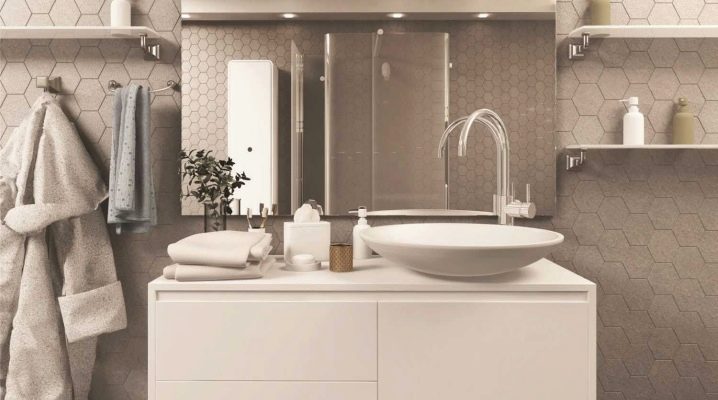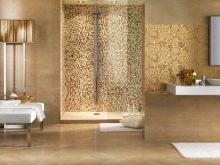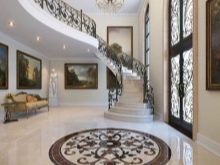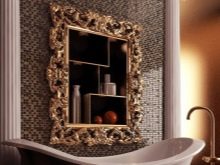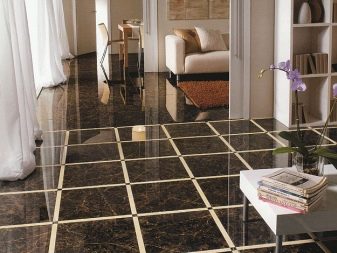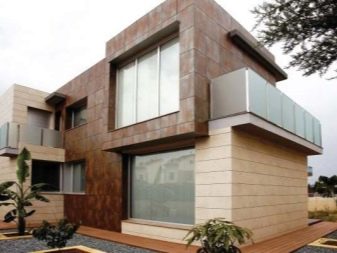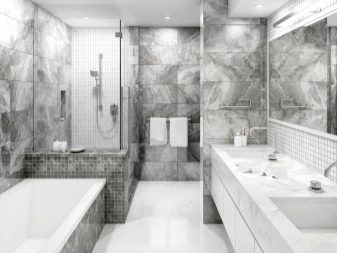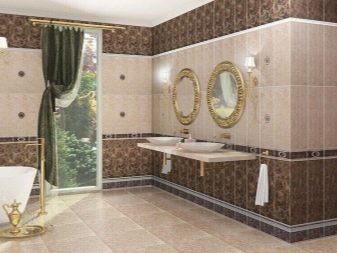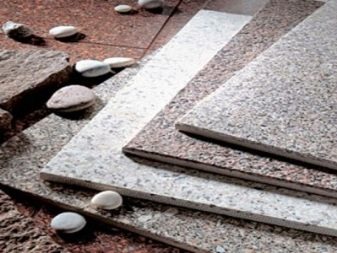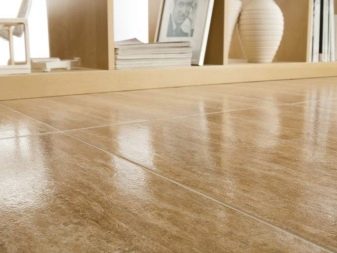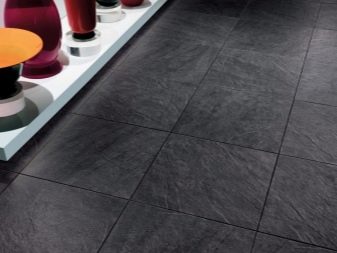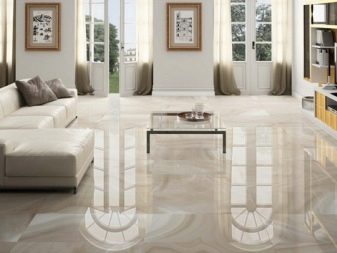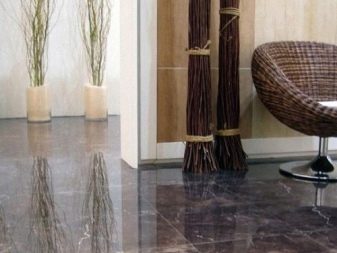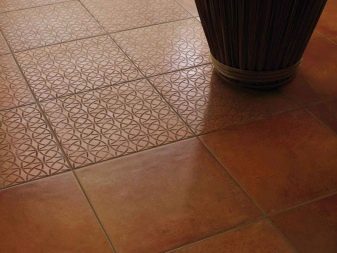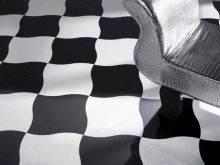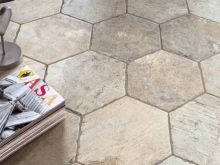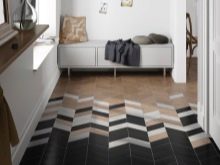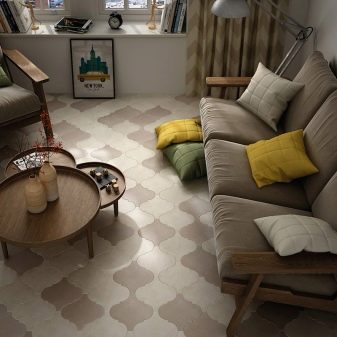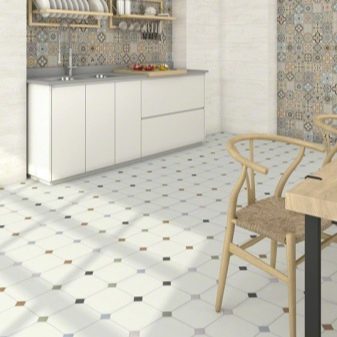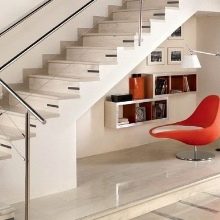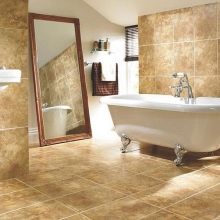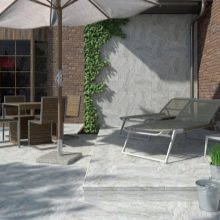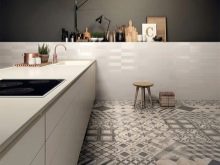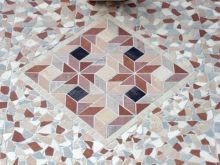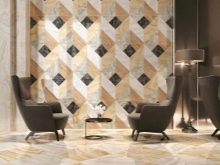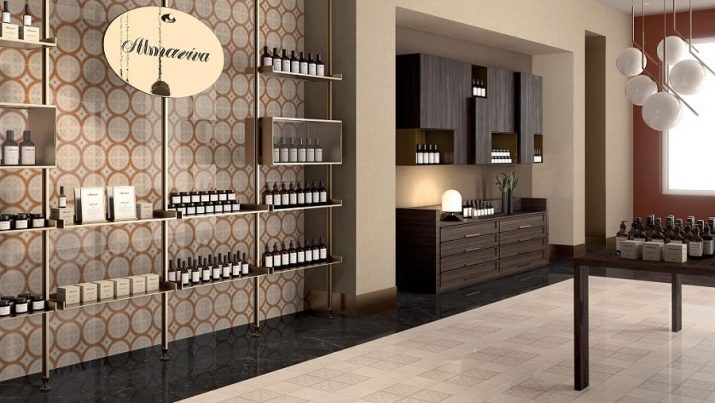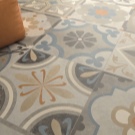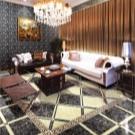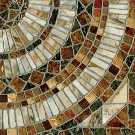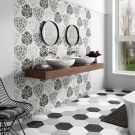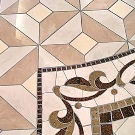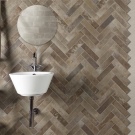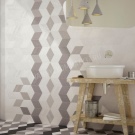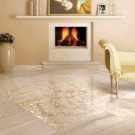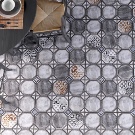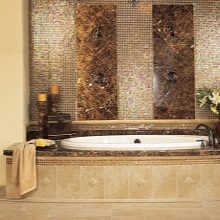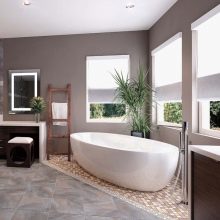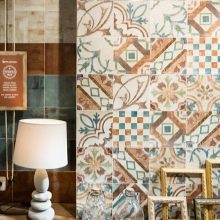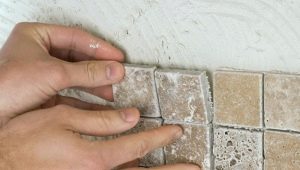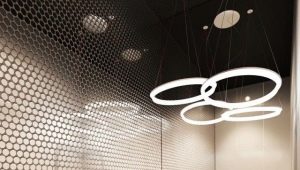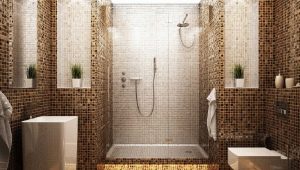Mosaic of porcelain tiles in the interior
Porcelain is a new generation of ceramics, which was invented only recently. In the late 1970s, it was reported that the Italian masters created a new composite material based on ceramic mass. The clay mixture was strongly squeezed under pressure — with a force twice as large as for the formation of a regular tile. And then burned at a temperature of 1300 degrees, which is 200 degrees more than the temperature for a normal tile.
This process is similar to the birth of a stone in natural conditions. Only in furnaces it occurs much faster. The result was ceramics, which in its characteristics is close to granite. Thus was born porcelain stoneware. It has its difficulties in manufacturing. It is necessary to carefully observe the proportions of the mixture and firing, in which the tile must be heated gradually. But the result of such complex technological processes is excellent.
Specifications
The main characteristic of porcelain stoneware is incredible strength. Leave a scratch on it can only be diamond or corundum. Therefore, it is easy to work with him, and it can be laid in places where physical impact occurs on the tile. That is why porcelain stoneware is used in public buildings, where many people go - at airports, concert halls, shopping and entertainment complexes. It withstands temperature drops of 100 degrees, so it is used for wall and floor decoration in production workshops.
The second important feature is almost zero water absorption. Porcelain tiles absorb less water than rock. Because of this, they can be used to finish the exterior walls of the house, and in the part where the most damp is near the ground. The porcelain stoneware coating of the lower part of the facade protects the wall from the damaging effects of moisture and precipitation.
The third important feature is the ability to create various shades and form tiles of any shape from the clay mass. Thus, porcelain stoneware is one of the best achievements of modern industry in the field of finishing materials.
It has installation features. Standard adhesive formulations are not suitable for it. Water-based adhesive does not hold tiles, because porcelain stoneware does not absorb water. It requires a special two-component adhesive consisting of a dry mix and acrylic or latex.
Such compounds perfectly manifest themselves during operation - they are resistant to the effects of temperature, water and shocks.
Kinds
Based on a single technological process have been developed varieties of porcelain tiles, which allow to diversify its application.
- Technical stoneware does not undergo additional processing after firing. It looks like natural granite and is relatively inexpensive due to a simpler manufacturing process.
- Glazed stoneware is roasting twice. After sintering the tile, a beautiful icing is applied to it and sent to the furnace again. The tile itself is very durable due to double firing. But its beautiful glazed surface can wear out under pressure. Therefore, it draws those parts of the building where the load will be insignificant.
- Matt porcelain stoneware has a corresponding surface devoid of gloss.
- Polished Porcelain tile is polished after firing. However, it also does not carry heavy loads. Under their influence during operation, its shiny surface can wear out.
- Structured porcelain stoneware has an uneven surface. They put on it a drawing and a relief imitating natural stone, leather, wood, fabric with a pattern, any materials. This kind of porcelain stoneware is even covered with gold leaf.
- Satin finish ceramic granite is covered with a layer of mineral salts before heat treatment. As a result, its surface gets shine, as if waxed. The surface of such tiles does not like heavy loads and wears quickly when they are exposed.
Porcelain tile is very different in size. It is produced from squares with a side of 7.5 cm to plates larger than a meter in size. This allows you to lay mosaics in a variety of ways. It is of different thickness. The thinnest - from 7 mm - goes on facing the walls. Its negligible thickness reduces the weight of the tile. The tile of average thickness is used for finishing of a floor. The thickest ones - up to 30 mm - are used for finishing wear-resistant stairs.
Using the capabilities of the production process, porcelain tiles are produced in different forms - square, rectangular, triangular, six- and octahedral, round, oval, irregular shape.
Interior design
Modern production produces a huge variety of design solutions porcelain. That is why it is possible to create from it any composition: both plain and mosaic.
This material has become very popular due to its durability, wear resistance during operation, inertness to water and chemical compounds. At the same time the price of porcelain makes it affordable for the average consumer. Therefore, you can use it in the interior almost everywhere.
Porcelain stoneware looks especially good on surfaces that are exposed to mechanical and chemical effects. This is primarily the floors and steps of the stairs in the house and apartment. These are rooms with high humidity - bathroom, toilet, bathroom unit, sauna, swimming pool. When finishing the working areas of the kitchen such tiles will last a long time. It is easy to wash it, and after cleaning it will retain its original appearance for a long time.The ceramic granite is finished with a fireplace and the area around it, where a spark can fly out of the burning zone.
Porcelain tiles are perfect for finishing loggias, glazed balconies and verandas, winter gardens, terraces and other unheated apartment and building adjoining rooms.. This tile perfectly maintains frosts and temperature drops, it is wear-resistant at loads on a floor, easily washes, cleans up and long keeps an original form.
Even storerooms, garages, furnace and other technical premises can be finished with cheap granite. It will allow to keep them clean, safe, will serve for a long time, and will give them a beautiful and cozy look.
Mosaic tiles
Mosaic of porcelain can be laid out very different. The smallest tiles produced by industry allow you to create patterns that are akin to cross-stitching. Mosaic ornaments and paintings on surfaces in the interior create larger slabs.
The combination of colors in a mosaic of porcelain stoneware can be very different. This is a one-color version using different textures and surfaces. Mix - use two or three colors or shades.If it is bright colors, the mosaic is extremely cheerful. But you can use shades of the same color, then it will be more relaxed. Gradient implies a smooth transition from one tone to another. May include up to three colors at once.
The pattern is an option when the tiles depict an ornament or a picture. Here the number of colors and artistic methods are not limited. Still use the method of the location of the tiles - the "grid", when a solid canvas spread square elements. Tiles can be alternated in a checkerboard pattern or lay out a carpet pattern with ornaments and a border.
Interesting is the reception of a combination of different tiles, often opposite in appearance. This is a combination of plain and painted, smooth and with relief, matte and shiny, plates of different sizes and configurations that fit together.
To get a painting on the porcelain, it is done manually. Now tiles are produced not only with patterns, but also with artistic paintings. Sometimes it is a whole canvas with an artistic plot. There are options for finishing tiles with different textures and a curved surface. This combination of elements allows you to create a unique mosaic finish.
There are several ways of laying out a mosaic of porcelain stoneware. One of the most laborious is when picking up a tile in bulk and laying out an ornament on the spot. There are also mosaic canvases that have already been assembled by experts in production. In this case, it is glued to the polymer mesh. Such a canvas is attached to the base along with the mesh, due to which adhesion to the surface is better. There is a variant of the collected canvases, which are glued on the paper base with their face, because of which they stick together and do not fall apart. Such a canvas is attached to the surface entirely, and then the paper is removed.
You can experiment with porcelain stoneware on your own. It is not necessary to buy ready-made panels and sets. You can purchase a tile in bulk and lay out any composition of it. If there is an opportunity to buy a tiled battle that sells a building supermarket, you can use it.
And you can apply a whole tile of different size, color, type in combination with other ceramic products. So you can get a unique mosaic that exists in the world just one copy and reflects the nature of its creator.
In the next video, see a demonstration of laying porcelain stoneware on the floor diagonally with decor.
